
In September 2022 Oxbow's bookshop and distribution buisness merged with Pen & Sword Books, a family run independent publisher of history books. The book distribution aspect of our business will continue to bring you some of the best books in the field of archaeology and related disciplines as Casemate UK. The Oxbow Books publishing imprint remains as a separate entity, still sold and distributed exclusively by us.
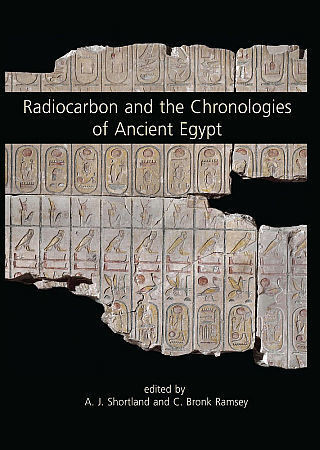
Format: Paperback
Pages: 192
ISBN: 9781842175224
Pub Date: 31 May 2013
Illustrations: 80 b/w + col illus.
Description:
This volume presents the findings of a major international project on the application of radiocarbon dating to the Egyptian historical chronology. Researchers from the Universities of Oxford and Cranfield in the UK, along with a team from France, Austria and Israel, radiocarbon dated more than 200 Egyptian objects made from plant material from museum collections from all over the world. The results comprise an accurate scientifically based chronology of the kings of ancient Egypt obtained by the radiocarbon analysis of short-lived plant remains.
The research sheds light on one of the most important periods of Egyptian history documenting the various rulers of Egypt's Old, Middle and New Kingdoms. Despite Egypt's historical significance, in the past the dating of events has been a contentious undertaking with Egyptologists relying on various chronologies made up from archaeological and historical records. The radiocarbon dates nail down a chronology that is broadly in line with previous estimates. However, they do rule out some chronologies that have been put forward particularly in the Old Kingdom, which is shown to be older than some scholars thought. The research has implications for the whole region because the Egyptian chronology anchors the timing of historical events in neighbouring areas tied to the reign of particular Egyptian kings. The results will allow for more historical comparisons to be made in countries like Libya and Sudan, which have conducted radiocarbon dating techniques on places of archaeological interest in the past.

Format: Hardback
Pages: 352
ISBN: 9781842174883
Pub Date: 31 May 2013
Illustrations: b/w & colour illus
Description:
The Somerset Levels and Moors are part of a series of coastal floodplains that fringe both sides of the Severn Estuary. These areas have similar Holocene environmental histories and contain a wealth of waterlogged archaeological landscapes and discrete monuments. The importance of Somerset's prehistoric wetland heritage is shown by the fact that twenty-five percent of all the prehistoric waterlogged sites thought still to exist in England are from the Somerset moors, the County Museum in Taunton Castle holds the largest collection of conserved prehistoric worked wood in the UK, possibly in the whole of Europe, the Sweet Track (the oldest known wooden trackway in the UK) and Glastonbury Lake Village have produced the most complete record of Neolithic and Iron Age material culture in the UK and Glastonbury Lake Village was the best preserved prehistoric settlement ever discovered in the UK.
This substantial monograph presents the results of the MARISP project ( Monuments at Risk in Somerset Peatlands) which thoroughly assessed the condition of the wetland monuments and the ongoing threats to their survival and aimed to answer key research questions about the sites through the use of minimally invasive excavation and to inform the development of future national and county wetland strategies.

Format: Hardback
Pages: 240
ISBN: 9781842174739
Pub Date: 03 May 2013
Series: Levant Supplementary Series
Description:
The Jordanian badia is an arid region that has been largely protected from modern development by its extreme climate and has preserved a remarkably rich record of its prehistoric past. This is the second of two volumes to document extensive surveys and excavations in the region from Al-Azraq to the Iraqi border over the period 1979-1996. Broadly, it covers the Late Neolithic and Chalcolithic of the eastern badia.
Over time, an outline prehistory of the region has emerged. Late Epipaleolithic campsites have been found in the north-west of the harra in the foothills of Jebel Druze, while the central basalt region saw a floruit of activity in the late Aceramic Neolithic, when it was used extensively for hunting. This volume covers the following period, which witnessed a further spread of campsites and short-term occupation out around the edges of the harra and across the hamad as far as the lands bordering the Euphrates to the north and east. This period was marked by the first appearance of sheep and goat as one element of the steppic economy alongside traditional practices of hunting and foraging. The concluding chapter discusses these changes and proposes models for the introduction of domesticated animals into the steppe as a precursor to a full nomadic pastoral economy.

Format: Hardback
Pages: 320
ISBN: 9781842175187
Pub Date: 03 May 2013
Illustrations: 260 col illus.
Description:
The region of Rough Cilicia (modern area the south-western coastal area of Turkey), known in antiquity as Cilicia Tracheia, constitutes the western part of the larger area of Cilicia. It is characterised by the ruggedness of its territory and the protection afforded by the high mountains combined with the rugged seacoast fostered the prolific piracy that developed in the late Hellenistic period, bringing much notoriety to the area. It was also known as a source of timber, primarily for shipbuilding.
The twenty-two papers presented here give a useful overview on current research on Rough Cilicia, from the Bronze Age to the Byzantine period, with a variety of methods, from surveys to excavations. The first two articles (Yağcı, Jasink and Bombardieri), deal with the Bronze and Iron Ages, and refer to the questions of colonisation, influences, and relations. The following four articles (Tempesta, de Souza, Tomaschitz, Rauh et al.) concern the pirates of Cilicia and Isauria who were a big problem, not only for the region but throughout the Mediterranean and Aegean during the late Hellenistic and especially Roman periods. Approaching the subject of Roman Architecture, Borgia recalls Antiochus IV of Commagene, a king with good relations to Rome. Six papers (Spanu, Townsend, Giobbe, Hoff, Winterstein, and Wandsnider) publish work on Roman architecture: architectural decoration, council houses, Roman temples, bath architecture, cenotaph, and public buildings. Ceramics is not neglected and Lund provides a special emphasis on ceramics to demonstrate how pottery can be used as evidence for connections between Rough Cilicia and northwestern Cyprus. Six contributions (Varinliog(lu, Ferrazzoli, Jackson, Elton, Canevello and Özy?ld?r?m, Honey) deal with the Early Christian and Byzantine periods and cover rural habitat, trade, the Kilise Tepe settlement, late Roman churches, Seleucia, and the miracles of Thekla. The final article (Huber) gives insight into methods applied to the study of architectural monuments.
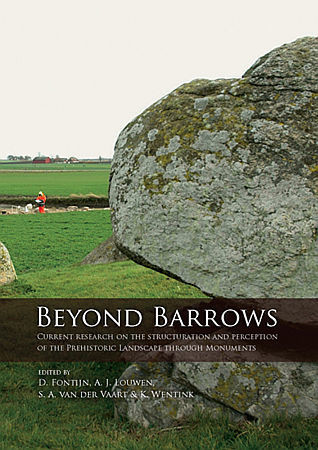
Format: Paperback
Pages: 280
ISBN: 9789088901089
Pub Date: 30 Apr 2013
Illustrations: 50 fc, 100 b/w illus
Description:
Europe is dotted with tens of thousands of prehistoric barrows. In spite of their ubiquity, little is known on the role they had in pre- and protohistoric landscapes. In 2010, an international group of archaeologists came together at the conference of the European Association of Archaeologists in The Hague to discuss and review current research on this topic.
This book presents the proceedings of that session.The focus is on the prehistory of Scandinavia and the Low Countries, but also includes an excursion to huge prehistoric mounds in the southeast of North America. One contribution presents new evidence on how the immediate environment of Neolithic Funnel Beaker (TRB) culture megaliths was ordered, another one discusses the role of remarkable single and double post alignments around Bronze and Iron Age burial mounds. Zooming out, several chapters deal with the place of barrows in the broader landscape. The significance of humanly-managed heath in relation to barrow groups is discussed, and one contribution emphasizes how barrow orderings not only reflect spatial organization, but are also important as conceptual anchors structuring prehistoric perception. Other authors, dealing with Early Neolithic persistent places and with Late Bronze Age/Early Iron Age urnfields, argue that we should also look beyond monumentality in order to understand long-term use of “ritual landscapes”.The book contains an important contribution by the well-known Swedish archaeologist Tore Artelius on how Bronze Age barrows were structurally re-used by pre-Christian Vikings. This is his last article, written briefly before his death. This book is dedicated to his memory.This publication is part of the Ancestral Mounds Research Project of the University of Leiden.
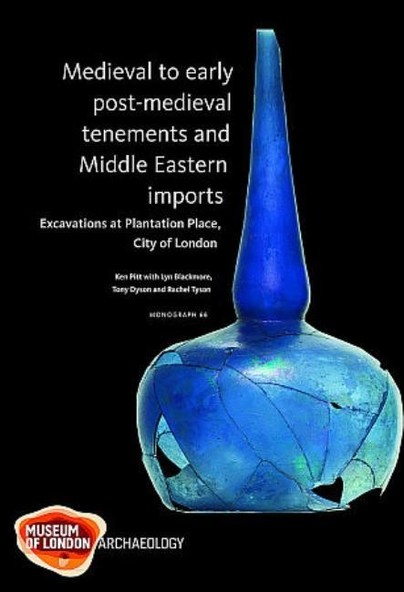
Format: Hardback
Pages: 140
ISBN: 9781907586163
Pub Date: 30 Apr 2013
Series: Monograph Series
Description:
Excavations at Plantation Place provided evidence for medieval and early post-medieval occupation of an entire block in the eastern part of the City of London near the Thames waterfront. Contemporary ground surfaces and buildings did not survive, but associated pits and wells have been related by documentary and cartographic research to identified tenements in this thriving area of shops, warehouses and merchants’ residences. Important assemblages from pits and wells include vessels used in refining gold, crucibles and moulds from bronze casting, and the largest assemblage of late medieval Islamic-style glass yet found in Britain, alongside Middle Eastern ceramics.

Format: Hardback
Pages: 201
ISBN: 9781782971481
Pub Date: 30 Apr 2013
Description:
In 1990 Seahawk Deep Ocean Technology of Tampa, Florida, commenced the world’s first robotic archaeological excavation of a deep-sea shipwreck south of the Tortugas Islands in the Straits of Florida. At a depth of 405 meters, 16,903 artefacts were recovered using a Remotely-Operated Vehicle. The wreck is interpreted as the Buen Jesús y Nuestra Señora del Rosario, a small Portuguese-built and Spanish-operated merchant vessel from the 1622 Tierra Firme fleet returning to Seville from Venezuela’s Pearl Coast when lost in a hurricane.
Oceans Odyssey 3 introduces the shipwreck and its artefact collection – today owned and curated by Odyssey Marine Exploration – ranging from gold bars to silver coins, pearls, ceramics, beads, glass wares, astrolabes, tortoiseshell, animal bones and seeds. The Tortugas shipwreck reflects the daily life of trade with the Americas at the end of the Golden Age of Spain and presents the capabilities of deep-sea robotics as tools for precision archaeological excavation.

Format: Paperback
Pages: 256
ISBN: 9781905119387
Pub Date: 30 Apr 2013
Illustrations: col illus
Description:
This book discusses the 19th-century historic landscape of Devon though the creation, manipulation and querying of a Geographical Information Systems (GIS) database to examine physical evidence of change and development through field and settlement patterns. Making use of tithe surveys, the relationship between field and settlement morphologies and patterns of landholding is discussed for three case-study areas in Devon, developing the idea of landscape pays and the identification of regional differences in the study of the historic landscape.

Format: Paperback
Pages: 220
ISBN: 9781782971979
Pub Date: 30 Apr 2013
Series: TRAC
Description:
The twenty-second Theoretical Roman Archaeology Conference (TRAC) was held at the Goethe-University Frankfurt am Main in spring 2012. During the three-day conference fifty papers were delivered, discussing issues from a wide range of geographical regions of the Roman Empire, and applying various theoretical and methodological approaches. An equally wide selection of subjects was presented: sessions looked at Greek art and philhellenism in the Roman world, the validity of the concept of ‘Romanisation’, change and continuity in Roman religion, urban neighbourhood relations in Pompeii and Ostia, the transformation of objects in and from the Roman world, frontier markets and Roman archaeology in the Provinces.
In addition, two general sessions covered single topics such as the ‘transvestite of Catterick’, metal recycling or Egyptian funeral practice in the Roman period. This volume contains a selection of papers from all these sessions.

Format: Paperback
Pages: 348
ISBN: 9789088901027
Pub Date: 30 Apr 2013
Description:
Some 2800 years ago, a man died in what is now the municipality of Oss, the Netherlands. His death must have been a significant event in the life of local communities, for he received an extraordinary funeral, which ended with the construction of an impressive barrow. Based on the meticulous excavation and a range of specialist and comprehensive studies of finds, a prehistoric burial ritual now can be brought to life in surprising detail.
An Iron Age community used extraordinary objects that find their closest counterpart in the elite graves of the Hallstatt culture in Central Europe. This book will discuss how lavishly decorated items were dismantled and taken apart to be connected with the body of the deceased, all to be destroyed by fire. In what appears to be a meaningful pars pro toto ritual, the remains of his body, the pyre, and the objects were searched through and moved about, with various elements being manipulated, intentionally broken, and interred or removed. In essence, a person and a place were transformed through destruction. The book shows how the mourners carefully, almost lovingly covered the funeral remains with a barrow. Attention is also given to another remarkable monument, long mound 6, located immediately adjacent to mound 7. Excavations show how mound 7 was part of an age-old ritual heath landscape that was entirely restructured during the Early Iron Age, when it became the setting for the building of no less than three huge Hallstatt C barrows. Thousands of years later, during the Late Middle Ages, this landscape underwent a complete transformation of meaning when the prehistoric barrows became the scenery for a macabre display of the cadavers of executed criminals.This publication is part of the Ancestral Mounds Research Project of the University of Leiden.

Format: Hardback
Pages: 194
ISBN: 9789490258054
Pub Date: 22 Apr 2013
Description:
Every ancient author writing about the Low Countries, was preoccupied with the complete contrast between the civilized people of the Roman Empire and the tribes of noble savages or barbarians living outside it. Julius Caesar exploited this preconception to enhance his own reputation, boasting that he had overcome the "bravest of all Gauls"; Tacitus employed the same stereotypes when he described the Batavian Revolt; and, in Late Antiquity, the Franks were still described as resembling monsters.The reality was different.
The presence of the Roman army along the River Rhine radically changed the way of life in the small Roman province of Germania Inferior, and the need to maintain and feed this large army became a significant incentive for economic change. The tribes living along the lower reaches of the Rhine and close to the North Sea gradually began to resemble their occupiers.Historian Jona Lendering and archaeologist Arjen Bosman have combined their considerable expertise to create a successful synthesis of historical and archaeological evidence, in this history of Rome s Lower Rhine frontier.
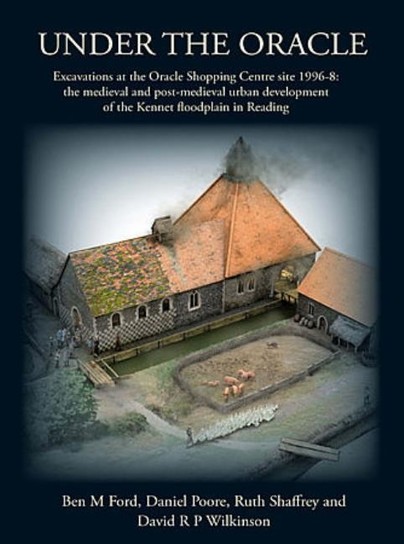
Format: Hardback
Pages: 340
ISBN: 9781905905270
Pub Date: 01 Apr 2013
Series: Thames Valley Landscapes Monograph
Description:
Excavations carried out by Oxford Archaeology in advance of the building of the Oracle shopping centre revealed a long sequence of development of the Kennet floodplain at Reading. This volume reports on the substantial evidence recovered for medieval and post-medieval water management, milling at the Minster Mill and St Giles Mill, the tanning, leather working and dyeing industries, and an unusual building interpreted as the 12th- to 13th-century cookhouse of Reading Abbey. The stories of two well-known Reading sites, the Oracle Workhouse and the Yield Hall, are followed from the medieval period up to the 19th century.
Substantial specialist reports include pottery, glass, leatherworking, dendrochronology and clay pipes.
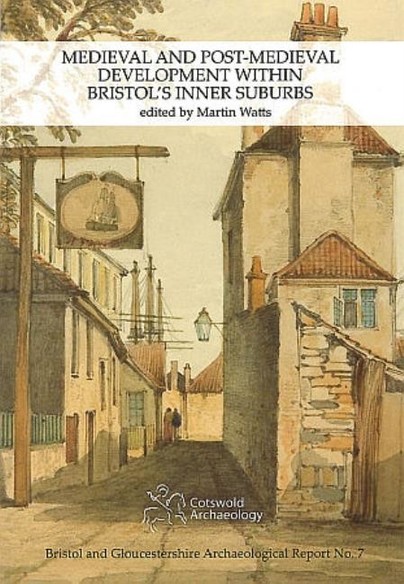
Format: Paperback
Pages: 144
ISBN: 9780955353444
Pub Date: 31 Mar 2013
Illustrations: 13 b/w and 41 colour illustrations
Description:
This volume contains the results of four archaeological projects undertaken within the historic suburbs of Bristol. Excavations at nos 26–28 and at nos 55–60 St Thomas Street were both within the 12th-century planned suburb of Redcliffe, just to the southeast of the medieval city. Investigations at Harbourside and at Cabot House, Deanery Road, were undertaken in the medieval district of Billeswick, to the southwest of the city centre and in the vicinity of Bristol Cathedral, formerly the church of the 12th-century St Augustine’s Abbey.
However, it is the general lack of evidence for significant development at these sites throughout the medieval and post-medieval periods and up to the beginning of the 18th century that provides a common theme.The scarcity of evidence for medieval and post-medieval development at the Billeswick sites, Cabot House and Harbourside, is unsurprising as both were in the ownership of the abbey or cathedral throughout this period, and were clearly of value as undeveloped land, either as parkland (as at Cabot House) or meadow (i.e. Canon’s Marsh at Harbourside). The dearth of evidence from the St Thomas Street sites in Redcliffe was more unexpected, though this appears to corroborate documentary evidence suggesting that this part of the suburb remained something of a backwater into late post-medieval times. At nos 55–60, there was little evidence for anything more substantial than simple boundaries and timber structures, perhaps used for drying cloth, until the beginning of the 18th century. At nos 26–28 there was no evidence for tenements until late into the post-medieval period and the site may well have been part of a medieval grange. The development of the first substantial buildings at both St Thomas Street sites, of new streets and terraces at Cabot House, and of the ropewalks and later industrial development of Canon’s Marsh at Harbourside, all reflect the rapid expansion and building boom Bristol enjoyed in the 18th century, largely a result of the city’s involvement in the Atlantic trade.
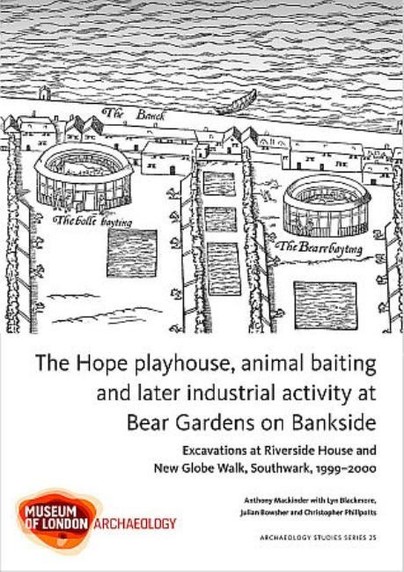
Format: Paperback
Pages: 94
ISBN: 9781907586200
Pub Date: 31 Mar 2013
Series: MoLAS Archaeology Studies Series
Description:
Southwark’s famous Bankside was long known as an entertainment area up to the 17th century. This volume provides evidence for the Barge, one of the medieval stewhouses (tavern/brothel) and the later Hope, a dual purpose building hosting animal baiting as well as play performances. The next phase in Bankside’s history was industrial and its glass and pottery products of the 17th and 18th centuries were much sought after.
Evidence for their production was found on the sites. The remains of 19th-century brick buildings relate to a known iron foundry in the area.

Format: Paperback
ISBN: 9781782971566
Pub Date: 19 Mar 2013
Series: Current Research in Egyptology
Description:
The thirteenth Current Research in Egyptology (CRE) conference was held from the 27th – 30th March 2012 at the University of Birmingham and once again provided a platform for postgraduates and early career Egyptologists, as well as independent researchers, to present their research. These proceedings for CREXIII represent the wide-range of themes that were offered by delegates during the conference, and cover all periods of Egyptian history; from Predynastic skeletal analysis through to Egyptology during the Islamic Middle Ages. These twelve papers include gender studies, analysis of Egyptian festivals, revisiting of chronological models, archaeological reanalysis of ancient landscapes, as well as social, historical and linguistic studies allowing a new appraisal of many aspects of Egyptian culture and history.

Format: Hardback
Pages: 272
ISBN: 9781842175101
Pub Date: 08 Mar 2013
Description:
Fifteen papers present the results of new research into various aspects of material culture and historical archaeology that reflect culture, trade and social interaction shared by Britain and Colonial America during the Tudor and Stuart periods. Recurrent themes include the use, significance and, in some cases, trade in specific types of pottery, including the ubiquitous stoneware flasks or canteens for sailors and solders on both sides of the Atlantic, and commodities such as wine and copper objects; the architectural history of manor houses and archaeology of plantations; aspects of the historical archaeology of Jamestown and Martins Hundred; the role of specific individuals in the development of Tudor-Stuart life and our new understand of a London destroyed the Great Fire based on Noel Humes rescue digs in a London destroyed by the Blitz. Overall the papers reflect the wide-ranging interests of Ivor Noël Hume, to whom the volume is dedicated.

















